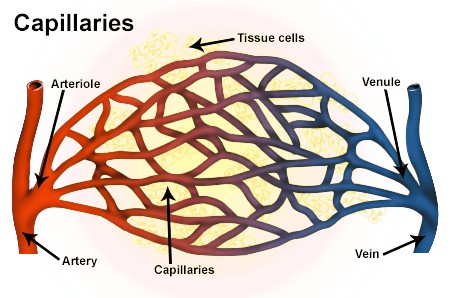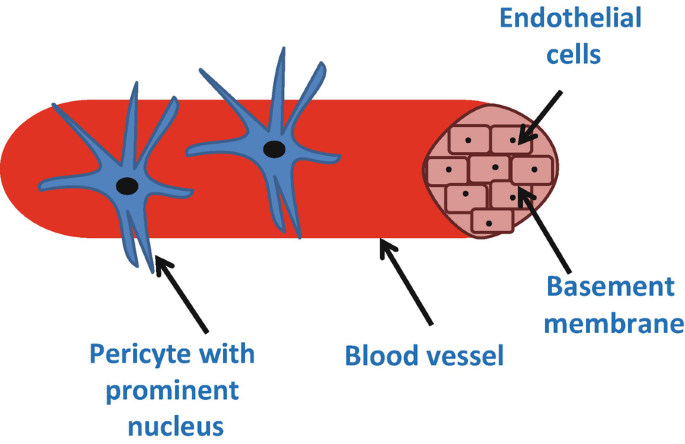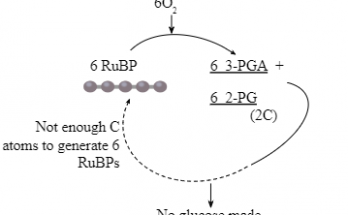Blood Vessels are a vital part of the human circulatory system . They are responsible for transporting blood, nutrients and oxygen to every part of the body. These complex structures form a complex network of tubes that connect the Heart to all organs and tissues in the body. Blood Vessels come in three main types – Arteries, Veins and Capillaries, each with a unique structure and function. Arteries carry oxygen-rich blood away from the Heart to the rest of the body while Veins bring oxygen-depleted blood back to the Heart. Capillaries on the other hand, connect Arteries and Veins allowing for the exchange of nutrients, gasses and waste products between the blood and tissues.
Table of Contents
Blood Vessels Diagram
Arteries and Veins diagram
Arteries and Veins are two of the three main types of Blood Vessels in the human body. Arteries carry oxygen-rich blood away from the Heart to the rest of the body, while Veins bring oxygen-depleted blood back to the Heart. Both Arteries and Veins have unique structures that enable them to carry out their functions effectively. Arteries have thicker walls, a more muscular layer and a smaller Lumen (inner space) compared to Veins, which allow them to withstand the high pressure of blood flow and pump blood effectively. Veins, on the other hand, have thinner walls and larger Lumens to accommodate the slower, low-pressure flow of blood.

Also Check – 8 Structural and Functional Difference Between Arteries Veins and Capillaries
Description of Arteries and Veins diagram labels is as follows
Artery
An artery is a blood vessel that carries oxygen-rich blood away from the Heart and towards the rest of the body. Arteries have thicker walls than Veins to withstand the higher pressure of blood flow.
Vein
A vein is a blood vessel that carries oxygen-poor blood back to the Heart from the rest of the body. Veins have thinner walls than Arteries and contain valves to prevent the backflow of blood.
Lumen
The Lumen is the inner space or channel of a blood vessel through which blood flows.
Tunica Intima
The Tunica Intima is the innermost layer of a blood vessel, which is composed of endothelial cells and connective tissue. It acts as a protective barrier and helps regulate blood flow.
Tunica Media
The tunica media is the middle layer of a blood vessel, which is made up of smooth muscle cells and elastic fibers. It helps regulate blood pressure and blood flow.
Tunica Adventitia
The Tunica Adventitia is the outermost layer of a blood vessel, which is composed of connective tissue and collagen fibers. It provides structural support and protection for the Blood Vessel.
Also Check – 15 Important Differences Between Arteries and Veins
Also Check – 10 Important Functions of Blood
Capillaries Diagram
Capillaries are the smallest and most numerous Blood Vessels in the human body. They are responsible for the exchange of nutrients, gasses and waste products between the blood and tissues. Capillaries connect Arteries and Veins, forming a network of vessels that allows for the efficient distribution of oxygen and nutrients to all cells in the body. The structure of Capillaries is unique, consisting of a single layer of endothelial cells that allow for the exchange of substances between the blood and tissues. The small size of Capillaries and their high density in tissues ensure that no cell in the body is too far from a capillary, enabling efficient exchange of substances.


Also Check – 13 Important Functions of Heart
Description of Capillaries diagram labels is as follows
Thin Endothelial cell wall only one cell thick
Capillaries are composed of a single layer of endothelial cells that are only one cell thick. This allows for the efficient exchange of substances between the blood and tissues.
Lumen
The Lumen is the inner space or channel of a blood vessel through which blood flows. In the case of Capillaries, the Lumen is very narrow to facilitate the exchange of substances between the blood and tissues.
Pericytes
Pericytes are specialized cells that are found in close association with Capillaries. They are believed to have a role in regulating blood flow and maintaining the integrity of the blood vessel wall.
Red blood cell
Red blood cells, or erythrocytes, are the most common type of blood cell found in the body. They contain hemoglobin, a protein that binds to oxygen and allows for the efficient transport of oxygen from the lungs to the rest of the body.
Note: Capillaries do not have distinct layers like Arteries and Veins, but rather consist of a single layer of endothelial cells and pericytes.


3 Comments on “Blood Vessels Diagram”